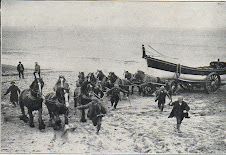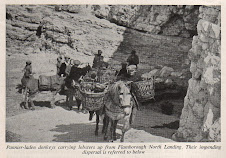If I had the opportunity to express my concerns about equestrian access to the coast to Dr. Helen Phillips, they would be as follows:-
1. I am concerned that over the last decade access for horse riders has not been at the heart of government legislation and policy making. This has resulted in reductions and restrictions to our network. The Coastal Access provisions are no different and are likely to result in further reductions.
The Countryside Agency research on ‘Rights of Way in the 21st Century’ and the ‘Rural Routes and Networks’ 2002[i] reported the fact that the access network for horse riders was less fit for purpose and more disjointed than that of the other user groups.
Despite this advice no proactive action has been taken. Instead the emphasis of policy and funding has been transferred almost exclusively to the development of access for walking and cycling. These policies, made without consideration for horse riders needs, have all resulted in a damaging reduction in their countryside access.
Examples of this are:-
The CROW Act 2000 – benefit to walkers.
Consequence – reduction in existing access for horse riders to some common land. This is mainly due to the installation of new fencing and gates which have obstructed horse riders existing access.
Walking and Cycling Strategy – benefit to walkers and cyclists.
Consequence – The availability of generous funding has created an imbalance. Local Authorities have shifted their priorities away from delivering rights of way networks for everyone, to paths specifically for walking and cycling. Horse riders have been excluded from the planning stages of these projects. This has frequently resulted in reductions of the quality and quantity of their existing access.
Forestry Commission Strategy – benefit (supposedly) all.
Consequence – Many Forestry Commission controlled sites are now less welcoming to horse riders. The permit systems that have been introduced in some forests make it more difficult and complicated for the public to enjoy access on horse back. They create uncertainty about where they may go and when. No such restrictions are applied to cyclists and walkers.
Whilst cycling and walking is free in Forestry Commission controlled land, toll rides for horse riders are being promoted at some sites. Many riders feel it is unjust and discriminatory that they should be charged for access when other groups are not.
Uncertainty about the Discovering Lost Ways project - benefit none.
Consequence – Horse riders, more than any other user group were relying on this project to provide a remedy for their fractured network. It is not so much new routes that they need, but the ability to use their old routes which are currently wrongly defined as footpaths. The long delay while we and the local authorities waited for a new workable solution, has meant that the development of the horse riding network has been at a virtual standstill and will be for the foreseeable future.
And now the Marine Bill is making its way through Parliament. Once again government is failing to protect the interests of horse riders. It has chosen not to protect their existing access to the foreshores and beaches by granting statutory rights (as it proposes for people on foot). The Asken Report 2007[ii], has warned that this is likely to result in a further loss of access for horse riders but the warning had been ignored.
2. I am concerned at the apparent general shift in policy making towards privatizing countryside access for horse riders. Examples of this are the promotion of permits, permissive paths under various agri-environment schemes, and toll rides. No surprise then that these are the solutions recommended by Natural England to provide equestrian access to the coast.
Natural England has got the balance wrong. It is increasingly biased towards its stakeholders, whose interests are diametrically opposed to public access. This has produced a strong leaning towards privately provided public access, with horse riders bearing the brunt.
There is considerable disquiet at government policy which has singled out access for horse riders as suitable for privatization. Of particular concern is the paper for the ‘Workshop to Inform the Future Strategy for Natural England 2005’[iii], which appears to recommend toll rides for horse riders by 2026.
Whilst it cannot be denied that these are capable of providing useful local solutions. I do not believe that they are THE solution to our countryside access problems, and it would be inappropriate to apply them as a method of protecting our existing free access to the coast. They run against the spirit of public access and are certainly no substitute for statutory rights of way and statutory access to open spaces. To quote Nigel Curry[iv], they run the risk of destroying access rights and denying access to those who cannot afford them.
The disadvantages of privatized access:-
Toll rides make horse riding more expensive at a time when the industry is trying to be more inclusive and attract participants from all backgrounds and income groups.
Privately funded permissive paths and toll rides do not provide permanent access and are easily removed.
They will exist only as long as favorable market conditions prevail.
Providing new access under the agri-environment schemes is a popular with landowners. But to date, they have failed to actually provide access for horse riders in any meaningful quantity.
They render horse riding in the countryside more complicated to access.
Where can I ride? When can I ride? Do I need to pay? This information has to be searched for in a number of different locations and in consequence is a much less welcoming experience.
[i]Rural Routes and Networks: Creating and Preserving Routes that are Sustainable, Convenient, Tranquil, Attractive and Safe
By Institution of Civil Engineers Staff, Great Britain Countryside Agency, Institution of Civil Engineers (Great Britain)
Published by Thomas Telford, 2002
http://books.google.co.uk/books?id=_b4aaoSl-8UC&pg=PA4&dq=statistics+%22horse+riding%22&lr=&as_brr=3#PPA6,M1
[ii] Appraisal of Options to Improve Access to the English Coast
Final Report by Asken Ltd 2007.
http://www.defra.gov.uk/wildlife-countryside/issues/pdf/asken-report.pdf
[iii] Future Strategy for Natural England 2005’
http://216.239.59.132/search?q=cache:-oP2116AA9EJ:www.countryside.gov.uk/Images/Appendix%2520C%2520Trends%2520assessment%2520workshop%2520presentation_tcm2-28169.pdf+2026+%2B+%22toll+rides%22&hl=en&ct=clnk&cd=11&gl=uk&lr=lang_en
[iv] Countryside Recreation, Access and Land Use Planning: Participation, Preferences, Policies
By Nigel Curry
Published by Taylor & Francis, 1994
ISBN 0419155503, 9780419155508
Pages 74. 75. & 76.
http://books.google.co.uk/books?id=AMAe7nCRs0AC&pg=PA9&dq=bridleways+%22john+dower%22&lr=&as_brr=3#PPA74,M1
skip to main |
skip to sidebar


Bringing in the Lifeboat

Statutory Access to the Foreshore...
News
Traditional Access
Donkey panniers Flamborough North Landing 1952

Access in Scotland
Sharp Practice
Legislation ignores us once again....
A flawed consultation…..
Environmental concerns.....
No thank you Natural England…..
Over the Stable Door
About Me
Blog Archive
-
▼
2009
(16)
- ► 01/04 - 01/11 (4)
- ► 03/15 - 03/22 (1)
- ► 03/22 - 03/29 (2)
- ► 03/29 - 04/05 (1)
- ► 06/14 - 06/21 (1)
- ► 06/21 - 06/28 (4)
- ► 07/05 - 07/12 (1)
- ► 11/08 - 11/15 (1)